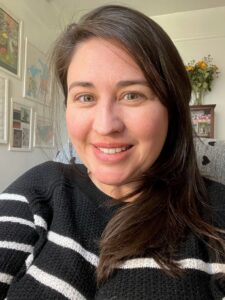Perhaps the greatest promise this country has ever offered — and one that’s been specially highlighted at CCNY — is equality for all, particularly when it comes to education access.

Dr. Nicole Lorenzetti. Courtesy of Lorenzetti.
CCNY Assistant Professor in Educational Psychology Dr. Nicole Lorenzetti has made this her mantra. Also City’s Special Education Program director, she focuses her work on preparing future educators with a critical approach to teaching, primarily through her studies on teacher biases.
In this way, Lorenzetti directly examines a place where some of the most tangible manifestations of bias in our society are laid bare: the classroom.
Lorenzetti researches bias in teachers, particularly those toward Black students, and the effect it has on teaching decisions, but namely its effect on teacher education students themselves. She collaborated with a graduate student from Hunter College, Alexandra Bloshenko, on a study last spring, titled “She Did It On Purpose,” which analyzed the attributional beliefs of teacher education students about Black female students compared to their White peers. It was published in “Issues in Teacher Education,” a leading teacher education journal.
“Teachers attribute more internal locus of control and controllability to the behaviors of Black girls than White girls,” Lorenzetti said of the study’s findings. The difference between those two terms in psychological attribution theory is that locus of control deals with the source of an outcome — either internally, from the student, or externally, from the student’s environment — while controllability refers to the degree to which a student perceives they can influence or change the cause of a given outcome.
In other words, teachers generally attributed higher influence in an outcome and greater internal control of outcomes to Black girls than White girls. Hence, while White girls were more likely to receive help for behavioral issues, Black students were more likely to receive punishment.
“In this study, teacher education students more often said they would refer White girls to the school psychologist and more often ignored the misbehavior of White girls than Black girls,” Lorenzetti said. She noted the disparity “absolutely tracks with national rates,” where Black students face suspension and expulsion at rates three to four times higher than their White peers.
Through Lorenzetti’s research, she’s seeking the psychological mechanisms that underpin that bias.
Her findings, subsequently, have informed her teaching methods. Lorenzetti emphasizes the importance of self-reflection among her students, many of whom are preparing to teach or are already in the profession. It’s critical for preparing educators to work with diverse populations.
“We are training teachers to go into schools and teach students, and somewhere like New York City, where the vast majority of our students are students of color, how are we actually actively advocating for students at the K through 12 level?” she asks.
Lorenzetti’s own path to educational psychology was a unique one. With a background in theater education, her interest in educational research began while managing a federally funded grant and working with educational psychologists at the Alliance Theater in Atlanta during its review. She was fascinated by how educational psychologists analyzed cognitive processes, she said.
She was inspired by a sign promoting a PhD program in Educational Psychology at CUNY’s Graduate Center, where she eventually pursued her doctorate, aiming to explore the “why” behind education rather than just the “what,” she said.
In her classes, Lorenzetti takes on complex topics like implicit bias, academic motivation and misconceptions about cognitive development.
One of her favorite subjects to discuss is “neuro myths” — misconceptions about how the brain functions. Some common examples include the idea that individuals have distinct learning styles, like visual, auditory or kinesthetic, or that listening to Mozart can enhance intelligence.
Addressing implicit biases in students can be a challenge, and may not go very far in a classroom setting.
“The more I get into my research on implicit bias, the more I recognize that short-term interventions don’t actually address implicit bias,” she said. “A lot of what people think is implicit bias is actually still explicit bias.”
Although Lorenzetti acknowledged that translating research into educational policy remains another challenge, she is dedicated to advocating for equitable education.
For students, teacher education students and teacher education students who want to do research, Lorenzetti advises to take every opportunity you can.
“The best thing I ever did was just say ‘yes’ a lot when I was in grad school, and I built this portfolio of lots of wild things,” Lorenzetti said, adding she’s currently working on a study on a pre-veterinary residency program.
Combining research, teaching and mentorship, Lorenzetti played a key role in shaping educators who can think critically, adapt thoughtfully and advocate for students in an evolving educational landscape. The effort to ensure CCNY’s programs meet the challenges of modern education with insight and inclusivity is constant.
Judah Duke is a journalist who graduated from CUNY Baruch College in 2024 with a degree in Journalism. He has reported on business, real estate and the environment across Texas and New York City and is currently pursuing a master’s degree at Columbia Journalism School, specializing in investigative reporting.